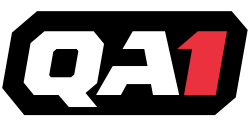Suspension Upgrade Guide For Your Chevy Nova
The Chevrolet Nova namesake has an impressive legacy, long recognized as one of the most beloved and iconic classic muscle cars of all-time. The Nova, however—originally known as the Chevy II before that name was dropped in 1969—was originally conceived as a lower-cost, more economical and mass-market alternative to other Chevrolet models like the Camaro, Chevelle, and Impala, the sportier and more upscale Pontiac Tempest and LeMans, and others. It in turn did not feature the same performance ride quality and handling characteristics of its higher-priced siblings and cousins.
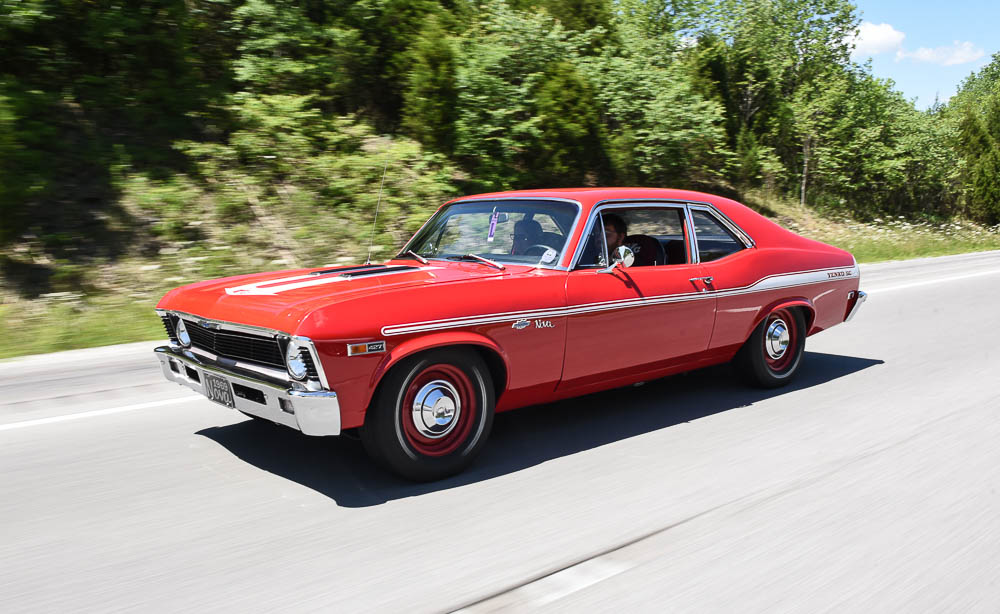
The Novas of the late 1960s and throughout the ‘70s featured an independent front suspension with control arm-mounted coil springs, and had leaf springs in the rear that were the standard of the era. The control arms sported mass-production-quality ball joints and rubber bushings that weren't designed for the long haul. Moderately-capable front sway bars were available on some performance models, such as the SS, in the 1960s, and became more standard in the mid-‘70s models. Rear sway bars were not available on any year-model Nova, or its X-body platform sibling, the Pontiac Ventura (which shared the Nova platform from 1971-’77). As a result, the Nova lacked a refined feel in performance driving scenarios, making it ripe for suspension upgrades.
If you’re considering making upgrades to your 1968-74 or 1975-79 model Nova, or 1971-74 or 1975-79 Ventura to give it the ride quality, handling, and adjustability that it never had from the factory—with a flare of modern design and geometry—we’ve assembled a complete guide to key upgrades to transform your driving experience.
Assessing the Current Suspension
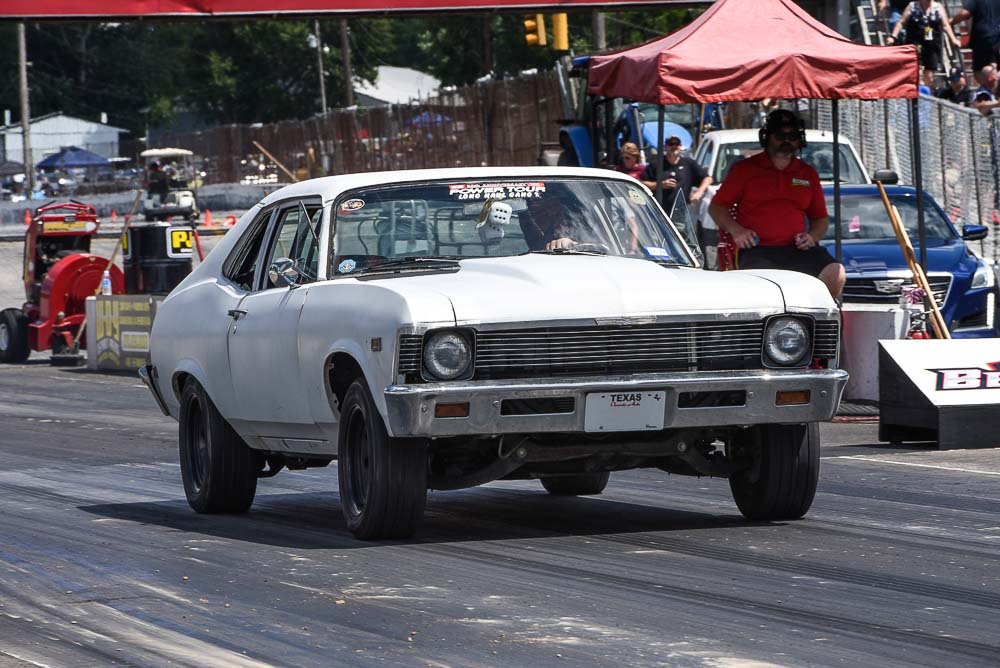
Before diving into specific upgrades, it’s essential to understand the limitations of the stock suspension on both the 1968-74 and 1975-79 Nova generations, and their age if they’ve never been upgraded in the vehicle’s lifetime. The front coil spring and rear leaf spring setups have likely experienced decades of wear, leading to weakened springs, worn-out bushings, and diminished performance. An inspection should focus on control arms, bushings, sway bar mounts, and shocks for any signs of deterioration, as these are commonly compromised areas that need replacement or reinforcement.
Other Things To Consider
Type of Build: Are you aiming for budget-friendly updates, a beautiful show car, or a performance-oriented project for track racing?
Performance Expectations: What are you planning to use your vehicle for? You’ll want to consider factors like handling, ride comfort, and adjustability to match your driving preferences. This includes your horsepower and torque expectations.
Budget: Your budget is key. To gain bolt-on adjustability and replace some of the important components to improve your Nova’s handling, solutions start at around $2,000, while a full-vehicle suspension solution with all the bells and whistles can cost over $10,000.
Prioritizing Suspension Upgrades For Your Nova
There are a range of ways you can approach upgrading your Nova; you can start with the essentials and work up to more extensive modifications to improve handling, ride quality, and adjustability step-by-step, or you can opt for a vehicle solution to transform your car all at once. Here’s a structured approach to upgrading your Nova’s suspension, tailored to deliver substantial improvements in performance.
Shocks and Springs
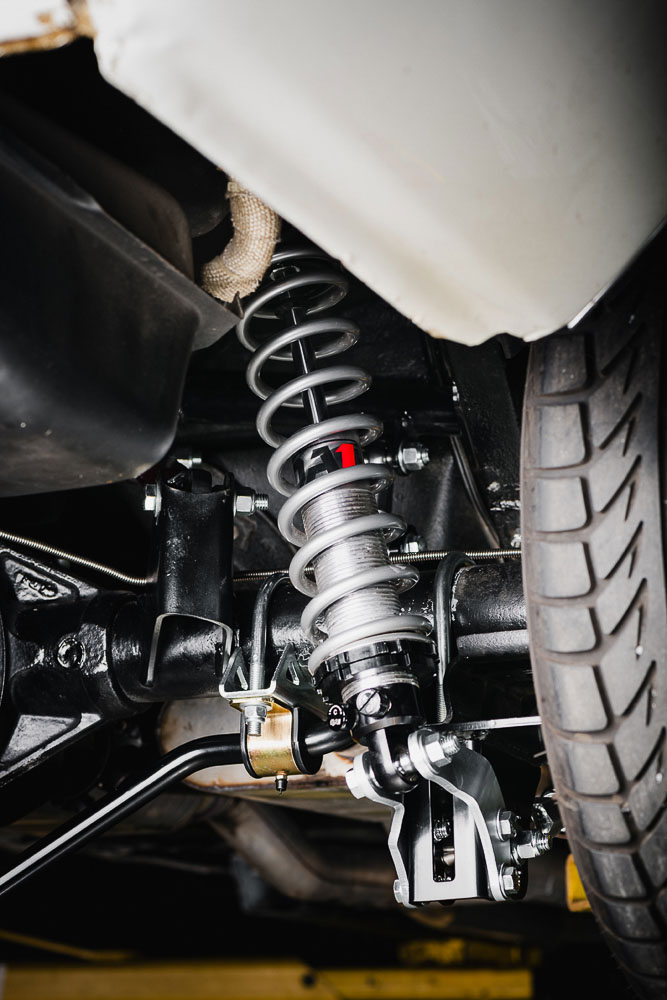
The first and most noticeable improvement can be achieved by upgrading the shocks and springs. The original dampers and springs may still be functional, but modern coil-over systems allow for improved handling and adjustability in a single package. For those seeking an all-around upgrade, QA1’s adjustable coil-overs offer a bolt-in solution compatible with both the 1968-74 and 1975-79 Chevrolet Nova models. These systems allow you to adjust ride height and damping settings, letting you customize the balance between comfort and performance based on driving conditions.
QA1’s single- and double-adjustable shocks can refine handling by offering control over compression and rebound. This customization is ideal for tailoring the setup to track days or spirited street driving, providing a noticeable improvement in handling precision and responsiveness. Coil-overs replace the outdated components, improving ride quality while providing an easy way to lower the car’s ride height. This setup ensures reduced body roll, improved grip, and a more controlled ride, especially beneficial for aggressive cornering.
Sway Bars
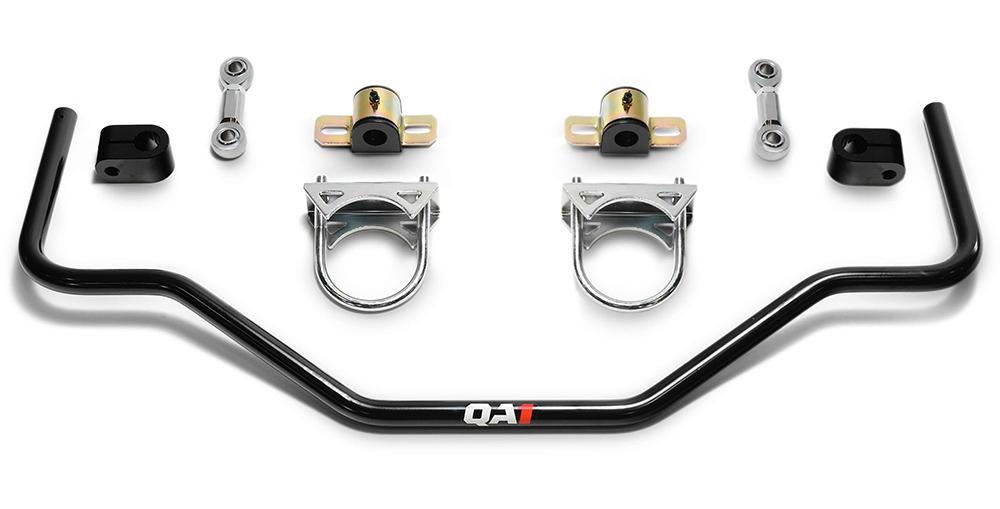
Adding or upgrading sway bars can transform the Nova’s handling by reducing body roll and increasing cornering stability. The factory sway bars, if equipped, are typically thin and minimally effective, particularly for performance driving. Replacing these with thicker, performance-oriented sway bars—such as QA1’s sway bars with polyurethane bushings—can immediately sharpen steering response and cornering performance.
Front Sway Bars: A larger diameter front sway bar reduces understeer and provides a more controlled, predictable steering feel, allowing you to confidently push your Nova through corners.
Rear Sway Bars: While absent on all Nova models from the factory, adding a rear sway bar is especially beneficial in reducing rear-end sway during hard turns, keeping the car planted and stable.
Control Arms
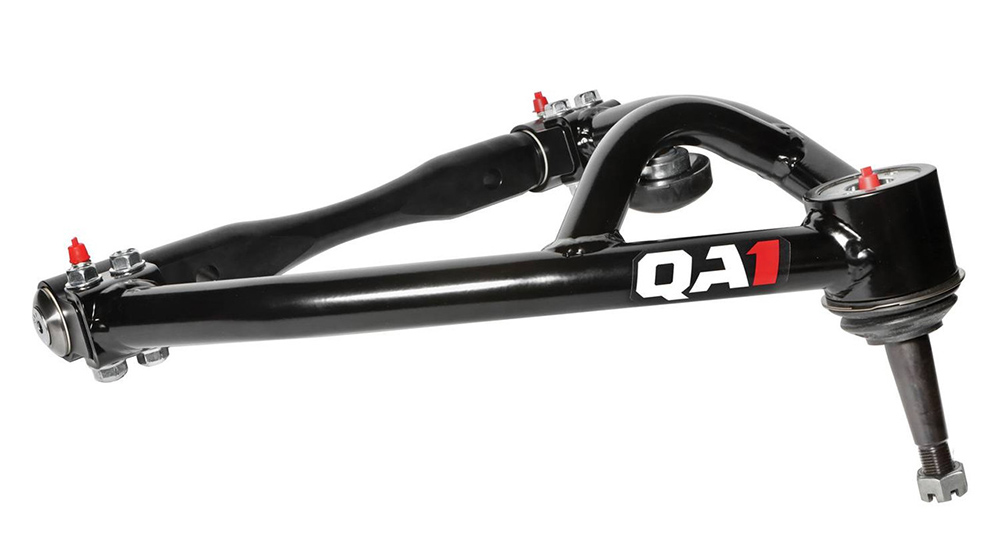
One of the most high-impact upgrades you can make, replacing factory control arms with tubular options, upgrades both the strength and geometry of the front suspension for an improved driving experience you’ll feel immediately. Stock stamped steel arms offer limited caster and camber adjustment, which affects tire contact during cornering and can limit grip. Modern tubular control arms, such as those from QA1, are designed to improve these angles, ensuring better contact for performance driving.
QA1 tubular control arms increase durability and responsiveness. The upper and lower control arms improve front-end geometry, ensuring smoother weight transfer and reduced deflection. With upgraded control arms, the steering and handling feel more connected and precise. They also help support wider tires and improved grip without compromising stability.
One of the key improvements over factory, QA1’s control arms feature high-grade bushings designed for both street cruising and performance driving. Street arms use durable polyurethane bushings, while pro-touring and drag racing arms come equipped with ultra-low-friction, ultra-low-deflection composite bushings. Unlike rubber bushings, which can deflect as much as 3/8 of an inch (unwanted motion that ultimately throws off your vehicle’s geometry), these materials significantly reduce deflection, preserving this geometry and maintaining tire contact patch in corners.
Rear Suspension: 4-Link Conversion
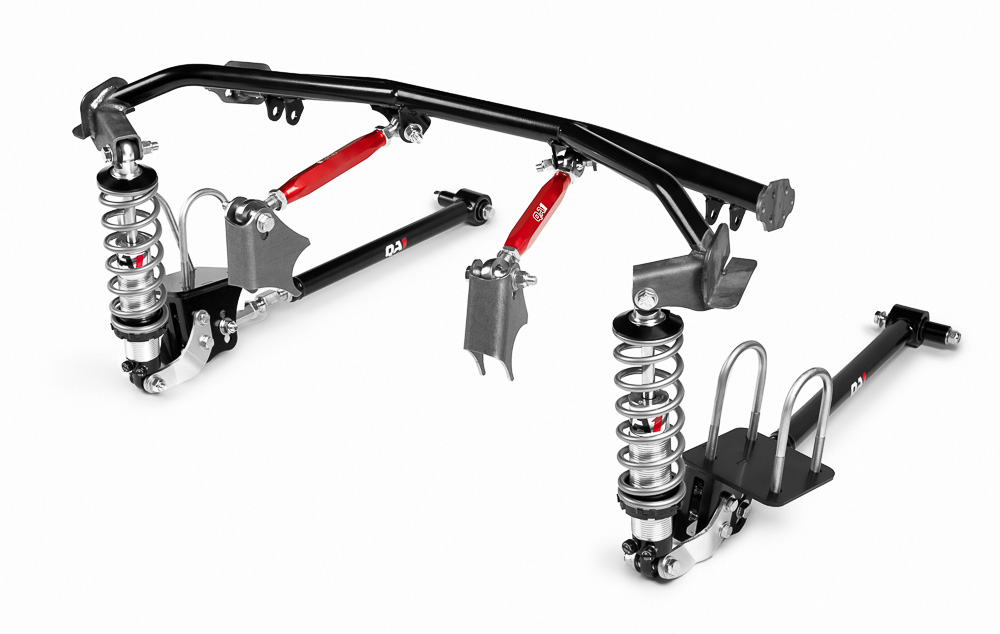
The Nova’s factory leaf spring setup can be replaced with a 4-link rear suspension system, bringing significant improvements in traction, control, and adjustability. A 4-link setup is especially beneficial for enthusiasts looking for high performance on the street or at the track, as it allows for fine-tuning of pinion angle and axle location under load.
Advantages of a 4-Link Conversion: Unlike leaf springs, which can create axle wrap under high torque, a 4-link design provides better lateral axle control, essential for high-torque applications and improved stability during launches and hard acceleration. This upgrade also offers a level of ride height adjustability and ride comfort not possible with the original leaf spring configuration.
Coil-Over Integration: QA1 4-link systems are paired with adjustable coil-over shocks, providing an additional level of ride height adjustability and improved damping control for versatile performance. QA1’s 4-link kit for the Nova offers a bolt-in solution, simplifying the conversion and enhancing both performance and appearance.
Complete Solution
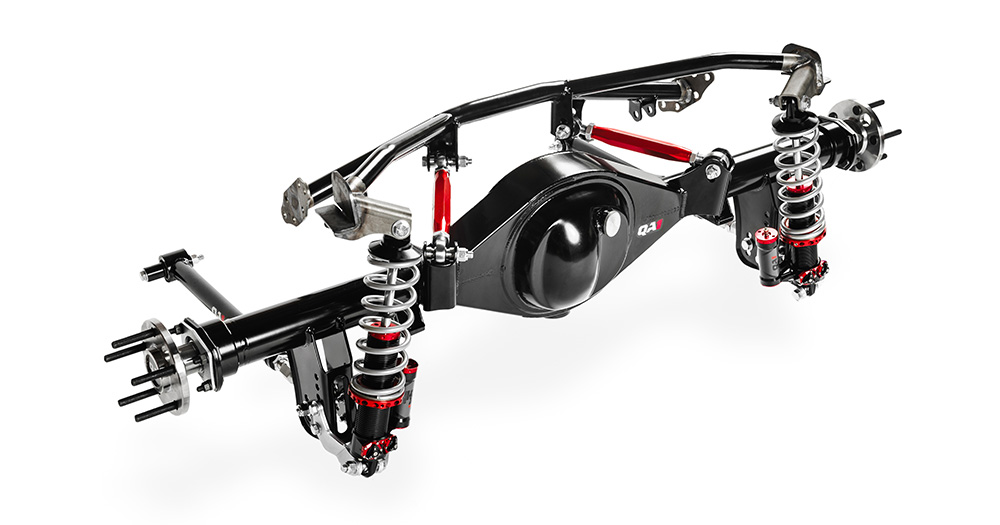
If added horsepower, driveline durability, and ease of maintenance are important to your goals, a Ford 9-inch rearend conversion is the perfect addition to your Nova or Ventura project. Especially valuable in higher-powered cars or those used for competitive driving, Ford’s legendary 9-inch rear is often considered the ultimate choice, with a wide range of gear ratio options, easy disassembly, and unbeatable durability, thanks to its ring and pinion design. QA1 has engineered a 9-inch housing and 31-spline axle package that is a direct bolt-in solution to marry to your QA1 4-link rear suspension kit, giving your X-body a complete rear makeover. Just add a center section of your choosing, brakes, and hit the road!
Chassis Stiffening
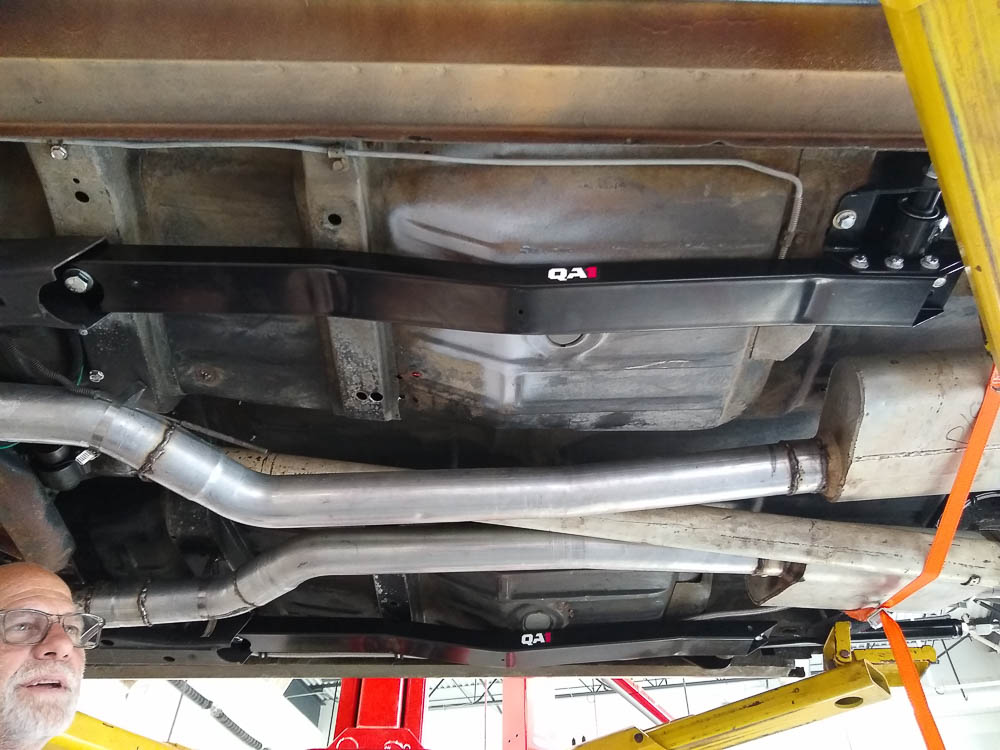
Reinforcing the Nova’s chassis is essential to prevent flex, particularly when handling and performance are enhanced. Subframe connectors are an effective solution for strengthening the body and reducing flex in high-stress situations. A stiffer chassis maintains alignment and ensures that suspension upgrades work to their full potential, preventing excessive body twist and improving response.
Subframe Connectors for the Nova: QA1 offers tubular subframe connectors designed specifically for the Nova platform, bolting directly to the existing frame. The tubular design connects the front subframe to the rear subframe, providing additional structural support and stiffness to the chassis. By linking the front and rear subframes, they significantly reduce flex and improve handling performance, especially during cornering, acceleration, and braking.
Bracing and Reinforcements
Beyond subframe connectors, additional braces can help with specific areas prone to flex. For instance, a shock tower brace connects the tops of the front strut towers, adding rigidity to the front suspension. This upgrade, paired with control arms and sway bars, creates a comprehensive handling package that transforms the Nova into a more capable, responsive vehicle.
Selecting the Right Components
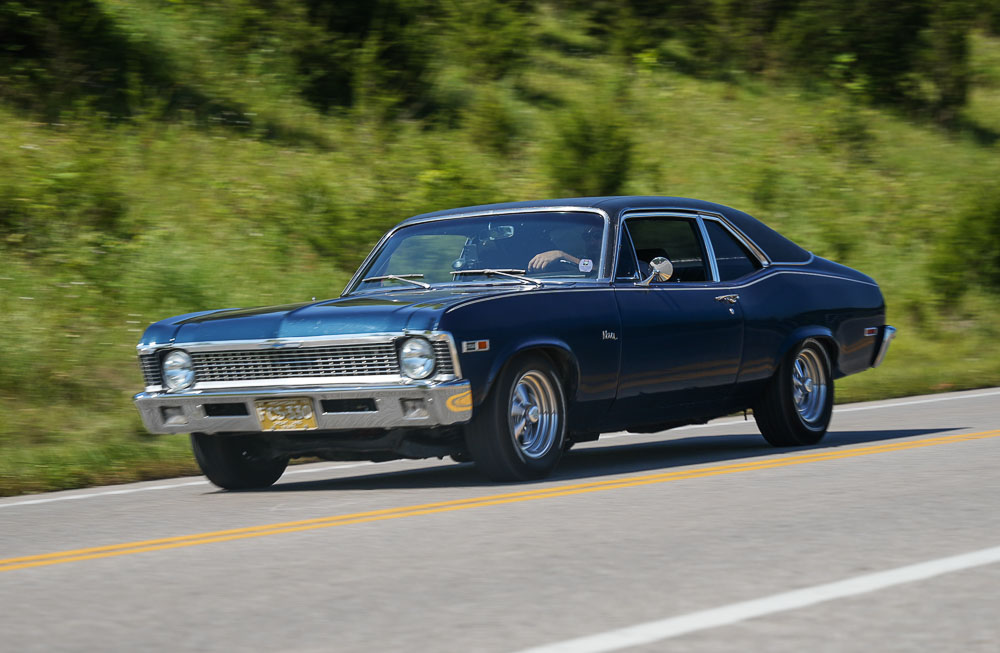
Choosing the right components depends on several factors, including intended use, budget, and desired level of adjustability. Adjustable components allow drivers to tune their setups to specific performance requirements, whether for daily driving, drag racing, or track events. Here are a few considerations:
Adjustability Options: Coilovers and sway bars enable fine-tuning, giving you the ability to adjust for comfort or performance depending on your needs. QA1’s adjustable shocks and sway bars are designed to allow easy tuning for different driving environments, from daily streets to track days.
Compatibility and Quality: QA1 offers components specifically engineered for the Nova and Ventura X-body platform, providing a direct fit and optimal performance. Ensuring compatibility simplifies installation and reduces downtime, so you can focus on enjoying the upgrades rather than troubleshooting or assembling parts from various sources.
Intended Driving Style: For those using their Nova primarily as a street cruiser, a moderate setup with coil-overs and upgraded sway bars should be sufficient. If you plan to race your vehicle or seek high-performance handling, a full suspension overhaul with tubular control arms, a 4-link rear conversion, and chassis bracing is recommended.
Upgrading the suspension of your Chevrolet Nova or Pontiac Ventura can transform its handling and ride quality, bringing it in line with modern performance standards. By systematically addressing shocks and springs, sway bars, control arms, rear suspension, and chassis stiffening, you can achieve a balanced and responsive driving experience. Careful selection of components and professional installation will ensure that your classic muscle car not only retains its iconic appeal but also delivers enhanced performance on the road or track.
